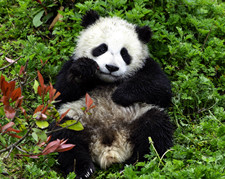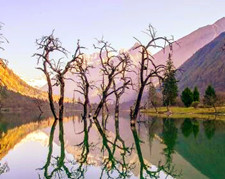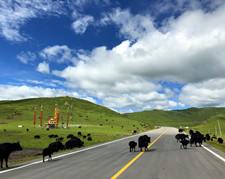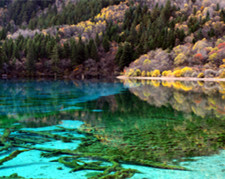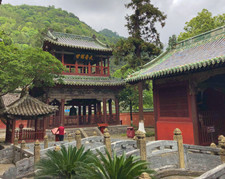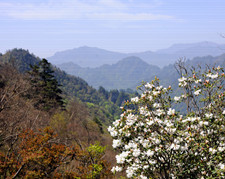Trip Details

15 Days Nature Photography in Sichuan
Date: Sept. 16 to Sept. 30, 2025, 2026
Price: From 3850USD/PAX
Trip Focus: Photo + Southwest China
Status: Open to Booking
Route: Chengdu-Wolong-Rilong-Xiaojin-Maerkang-Hongyuan-Tiebu-Ruoergai-Huanglong-Jiuzhaigou-Pingwu-Tangjiahe-Chengdu
Trip Code: PH002
Overview
Highlights:
• Visit two panda bases and one wild panda nature reserve in the panda hometown which are located in Chengdu, Wolong, and Tangjiahe respectively. Photograph the adorable Giant Panda at different ages and you even have the chance, though slim, to find a wild one with your lens in its natural habitat if you are lucky enough!
• Explore some of the best nature destinations in Sichuan. We venture north in the deep mountain of Qionglai to “Mount Balang” and “Mount Four Sisters”. The twisty mountain roads will lead us to Jiuzhaigou National Park and Huanglong National Park which are in the list of UNESCO World Natural Heritage.
• Wildlife photograph safari in the best spots of Sichuan. Located on the edge of Tibet Plateau, the vast high grassland and wetland in Ruoergai are famous for bird and wild animal watching. Also, with a wildlife safari in Tangjiahe Nature Reserve, the panda habitat, we will get a great opportunity for photos of some endangered wildlife in the breath-taking natural scenery.
• Have abundant chances to photograph a diversity of subjects such as unique architectures, Tibetan people, brilliant Tibetan monasteries, Hui minority group, snow-capped mountains, waterfalls, alpine lakes, vast grasslands, wetlands, nomadic areas, wildflowers, birds, and plateau wildlife.
• Guided by accomplished photograph guide who is specialized in nature, wildlife, and culture photography, with plenty of patience and enthusiasm to answer your questions and provide technical supports.
• Travel in a small group with 12 people at maximum to ensure the quality of your trip and each travel get enough attention for individual assistance.
Introduction to Trip Destinations: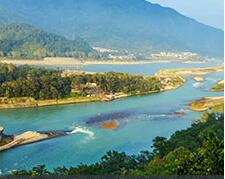 Dujiangyan Panda Ark
Dujiangyan Panda Ark
Wolong Panda Base
Wolong Panda Base is a new panda base built with the charity donation from Hong Kong Government after the 2008 earthquake during which the old Wolong Panda Base was damaged. It takes about a 2.5-hour drive from Chengdu to the base. This base is located inside the panda habitat and has the best natural temperature for the pandas. It is an excellent place for people who want to see active panda cubs with fewer crowds. Besides the pandas, it is possible to photograph Eurasian Hoopoe, Red-billed Blue Magpie, and so on. The Wolong Giant Panda Habitat Reserve around this area is one of the most important giant panda habitats in China.
Mount Siguniang National Park
Mount Siguniang is known as "Four Girls Mountain" or "Four Sisters Mountain" with its four peaks of Da Feng (5,025m), Er Feng (5,276m), San Feng (5,355m), and Yaomei Feng (6,250m). This park was inscribed as a part of Sichuan Giant Panda Sanctuaries on the heritage list by UNESCO in 2006. It covers an area of 2,000 square kilometers and is famous for the encompasses four peaks and the surrounding three valleys, namely Changping Valley, Haizi Valley, and Shuangqiao Valley. On our trip, we will pay a visit to Shuangqiao Valley which is over 30km long and dotted with snow mountains, alpine lakes, grasslands, virgin forests, yaks, colorful prayer flags, and white pagodas.
Tiebu National Nature Reserve
Sika Deer is also known as the spotted deer. Due to the local religious belief, local people never hunt wildlife in this area which makes Tiebu a paradise for Sika Deer. The Tiebu National Nature Reserve has the largest Sika Deer population in China. According to monitoring data from Tiebu National Nature Reserve, there were about 1,000 Sika Deer in the reserve in 2012. This Asian cervine species is relatively rare, but thanks to conservation efforts, their populations are on the rise. Visiting Tiebu National Nature Reserve gives you the best chance of spotting these animals in China. Enjoy a special photography trip for Sika Deer here.
Ruoergai Grassland
Ruoergai Grassland is believed to be one of the most beautiful grasslands of China, as well as one of the world's largest and best-preserved plateau peat swamp wetlands. These picturesque highland prairies sit at an elevation between 3,400m and 3,600m and host dozens of bird species like Black-necked Crane, Golden Eagle, Ruddy Shelduck, and many more. What is more, it is a good place to search for colorful flowers endemic to the Tibetan Plateau. Besides, it is a good place to searching wildlife like Tibetan Gazelle, Palla’s Cat, Wolf, Tibetan Fox, Plateau Pika, Himalayan Marmot, and so on. This highland wetland ecosystem is rare and needs good protection due to its vulnerability.
Huanglong National Park
Huanglong National Park sets within Minshan mountains in Songpan County, with lush green forests surrounding the unique limestone rock formations which are internationally renowned as being one of the world’s largest, undamaged karst landscapes. Huanglong means "Yellow Dragon" which got its name for its special geographical features. With a bird-eye view, the Huanglong National Park looks like a big golden dragon arching across the valley, winding its way between the snow-capped mountain peaks. Huanglong is famous for its "Four Wonders", the colorful pool, snow mountain, canyon, and forest. In 1992, it was listed on the World Natural Heritage List.
Jiuzhaigou National Park
Jiuzhaigou National Park (Jiuzhaigou Valley) was declared as a UNESCO World Heritage Site in 1992. If there are “fairylands” in the world, Jiuzhaigou Valley must be one of them. Stretching over 72,000 hectares in the northern part of Sichuan, the Jiuzhaigou Valley reaches a height of 2,000m to 4,800m, thus comprising a series of diverse forest ecosystems. Here live about 220 bird species as well as some endangered animals and plant species, including the Giant Panda, Golden Snub-nosed Monkey, Sichuan Takin, and numerous orchids and rhododendrons. Its superb landscapes are particularly interesting for its series of narrow conic karst landforms and spectacular waterfalls.
Bao’en Temple
Bao'en Temple is known as "The Forbidden City hidden in mountains". It is one of the largest and best-preserved architectural complexes of the Ming Dynasty in Sichuan. It was said the architecture was first built by Wang Xi, a local tribe head in Pingwu as his palace, by imitating the royal Forbidden City in Beijing. In ancient China, this was not allowed. When Wang knew that the emperor was infuriated by his action and the investigation officials were already on the way. He immediately turned his palace into a temple to pray for the longevity of the Emperor as a way to express his thanks to the great kindness he has received from the Emperor. That is why it is called "Bao'en Temple". " Bao'en", in Chinese, means to "requite royal kindness".
Tangjiahe Nature Reserve
Tangjiahe Nature Reserve is a famous panda habitat located at the Minshan Mountains. In the depth of those rugged mountains, we can find world-class attractions, elusive endemic birds, and a great variety of mammals, insects, amphibians, and plants. Though it is not easy to spot a Giant Panda in the wild, the rewards from paying a visit to this panda habitat are extremely high. With the umbrella protection of Giant Panda, its companion animals like Asiatic Black Bear, Golden Snub-nosed Monkey, Golden Pheasant, Chinese Goral, Sichuan Takin, Chinese Serow, Reeve’s Muntjac, Tufted Deer, Hog Badger, Yellow-throated Martin, Tibetan Macaque, Eurasian Otter, Wild Boar, Red Panda, Temminck's Tragopan, and Leopard Cat also get lots of benefits.
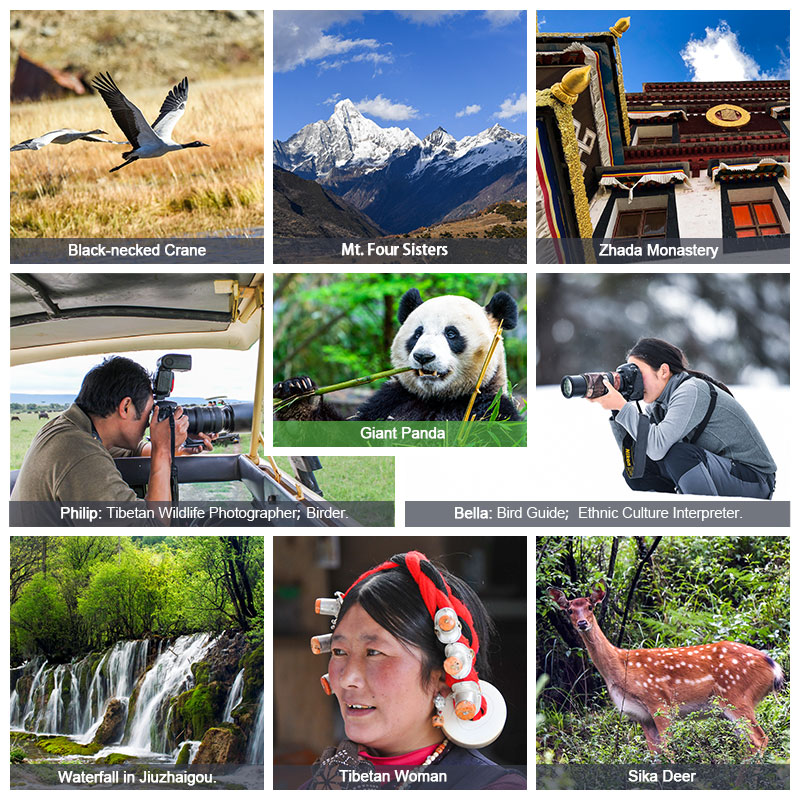
We use AbsolutePanda as company brand because of our deep love toward panda and our determination to create your absolutely enjoyable panda trips.
Map

Map of Nature Photography in Sichuan
Itinerary
Outline:
Day 1. Arrive in Chengdu. (D)
The airport pick-up. City exploration based on your time of arrival. Overnight: Chengdu (500m)
Day 2. Chengdu-Wolong. 135km 3.5h (BLD)
Drive to Wolong after visiting Chengdu Panda Base. Overnight: Wolong (2,000m)
Day 3. Wolong-Rilong. 100km 3h (BLD)
Drive to Rilong after visiting Wolong Panda Base and Dengshenggou Valley. Overnight: Rilong (3,350m)
Day 4. Rilong-Mount Siguniang National Park-Xiaojin. 60km 2h (BLD)
Visit Mount Siguniang National Park then head to Xiaojin. Overnight: Xiaojin (2,400m)
Day 5. Xiaojin-Maerkang-Hongyuan. 330km 7h (BLD)
Drive to Hongyuan via Maerkang. Overnight: Hongyuan (3,500m)
Day 6. Hongyuan-Tiebu. 230km 4.5h (BLD)
Drive to Tiebu via Ruoergai. Overnight: Tiebu (2,800m)
Day 7. Tiebu-Ruoergai. 100km 2.5h (BLD)
Drive to Ruoergai after visiting Tiebu National Nature Reserve and Huahu Lake (Flower Lake). Overnight: Ruoergai (3,450m)
Day 8. Ruoergai-Huanglong. 170km 3h (BLD)
Drive to Huanglong after visit Zhada Monastery. Overnight: Huanglong (3,200m)
Day 9. Huanglong-Jiuzhaigou. 100km 2.5h (BLD)
Drive to Jiuzhaigou after visiting Huanglong National Park. Overnight: Jiuzhaigou (2,000m)
Day 10. Jiuzhaigou National Park. (BLD)
Visit Jiuzhaigou National Park. Overnight: Jiuzhaigou (2,000m)
Day 11. Jiuzhaigou-Pingwu-Tangjiahe. 255km 6h (BLD)
Drive to Tangjiahe via Pingwu. Overnight: Tangjiahe (1,400m)
Day 12-13. Tangjiahe Nature Reserve. (BLD)
Photograph inside Tangjiahe Nature Reserve. Overnight: Tangjiahe (1,400m)
Day 14. Tangjiahe-Chengdu. 350km 6h (BLD)
Drive back to Chengdu from Tangjiahe. Overnight: Chengdu (500m)
Day 15. Depart Chengdu. (B)
Airport drop-off.
Details:
Day 1. Arrival in Chengdu. Meals: D
The airport pick-up. Based on the time you arrive, we can plan some free city tour programs such as visiting People’s Park to experience the typical laid-back lifestyles of Chengdu or taking you to Jinli Street to feel the bustling shopping street with unique local souvenirs and delicious local take-away food. Sichuan cuisine is among the top four Chinese cuisines, so a food tour will be a highlight. Sichuan Opera (Face-changing Show) is also a must-see that you don't want to miss.
Overnight: Chengdu (500m)
Day 2. Chengdu-Wolong. 135km 3.5h Meal: BLD
We will visit Chengdu Panda Base for the pandas when they are very active in the morning. Chengdu Panda Base is the breeding center that has the largest numbers of giant pandas in one facility in the world. Here you can see the pandas of different ages and you will have absolute panda photography experience! Also, during the breeding season (Aug. to Oct.), you will have the chance to take the photos of the newborn baby pandas. After the panda base, we will drive to Wolong which is well-known as the panda’s wild habitat.
Overnight: Wolong (2,000m)
Day 3. Wolong-Rilong. 100km 3h Meal: BLD
Today we will drive to Rilong after visiting Wolong Panda Base and Dengshenggou Valley. Wolong Panda Base (Wolong Shenshuping Panda Base) is located within panda habitats and has the best natural temperature for the pandas. This panda base was relocated here after the 2008 Earthquake with donations from Hong Kong Special Administrative Region. Because it is relatively far away from Chengdu, there are fewer visitors here so it is an excellent place for photographers to take a nice photo with active panda cubs with fewer crowds and better backgrounds. Here we also have a good chance to photograph birds such as Red-billed Blue Magpie, Elliot’s Laughingthrush, Chinese Babax, etc. After lunch, we will drive to Dengshenggou Valley for a light hike and get good shots of its natural scenery.
Overnight: Rilong (3,350m)
Day 4. Rilong-Mount Siguniang National Park-Xiaojin. 60km 2h Meal: BLD
Visit Mount Siguniang National Park (Four Sisters Mountain National Park) then head to Xiaojin. Today we will visit one of the most beautiful valleys in Sichuan, the Shuangqiao Valley of Mount Siguniang National Park. This area is renowned for its beauty. We will arrive at Shuangqiao Valley early, and if the weather is good, we can take photos of the sky’s beautiful reflection on the calm and clear surface of the alpine lakes. Taking a walk around the magnificent stupa decorated with colorful prayer flags will give us the chance to interact with Jiarong Tibetans. Inside this park, we can photograph holy snow-capped mountains, mirror alpine lakes, Tibetan pagodas, and yaks. With some luck, we may take photos of some local birds such as Himalayan Vulture, Bearded Vulture, White-throated Dipper, White-capped Water Redstart, etc.
Overnight: Xiaojin (2,400m)
Day 5. Xiaojin-Maerkang-Hongyuan. 330km 7h Meal: BLD
After departing from Xiaojin, our team will go north to the eastern Tibetan settlement of Maerkang. Here we will have the opportunity to explore the colorful aesthetic of the local culture. Many photo-worthy sights can be found in Maerkang, highlighting the traditional architecture, dress, and lifestyle of the local Tibetans. Then, we will drive to Hongyuan. Hongyuan is famous for its wetland habitat and Moon Bay. During our stay, we will explore the natural scenery in the grassland and visit a nearby Tibetan settlement to record the local way of life.
Overnight: Hongyuan (3,500m)
Day 6. Hongyuan-Tiebu. 230km 4.5h Meal: BLD
Today we will drive to Tiebu National Nature Reserve via Ruoergai Grassland. Ruoergai is famous for birding and wildlife photography safari. The vast grasslands and wetlands on the edge of Tibetan Plateau have an abundance of various endemic birds for us to search for, such as the Black-necked Crane and Golden Eagle. But we will not spend too much time in Ruoergai as we will be back on Day 7. And we will try to arrive at Tiebu National Nature Reserve earlier for the Sika Deer. Tiebu National Nature Reserve is famous for hosting wild populations of Sichuanese Sika Deer. This distinct subspecies of Sika Deer was first recorded in 1978 and has since been put under close protection from the Chinese government to ensure its survival.
Overnight: Tiebu (2,800m)
Day 7. Tiebu-Ruoergai. 100km 2.5h Meal: BLD
Today we will drive to Ruoergai after visiting Tiebu National Nature Reserve and Huahu Lake (Flower Lake). In the morning, we will have more chance to search and photograph the Sika Deer in Tiebu National Nature Reserve. Sichuanese Sika Deer are considered endangered and the remaining population is only roughly 1,000 individuals in the wild. Also, Tiebu is an excellent spot to find civets, serows, wolves, and foxes. Then we will head to Ruoergai via Huahu Lake. Ruoergai is ideal for photographing grassland wildlife such as Tibetan wolves and foxes. Ruoergai is inhabited by the Amdo Tibetans, another distinct group. Amdo Tibetans typically lead a nomadic pastoralist lifestyle and have grazed herds of yak and horses on these grasslands for generations. We will have the chance to visit some nomad tents for a cultural exchange opportunity with some local Tibetans.
Overnight: Ruoergai (3,450m)
Day 8. Ruoergai-Huanglong. 170km 3h Meal: BLD
In the morning, we can pay a visit to the Zhada Monastery where you will have the chance to take photos of Sika Deer that wandering freely around. Or we can also go on enjoying your photo time in Ruoergai grassland. Ruoergai is believed to be one of the most beautiful grasslands of China. What is more, it is a good place to searching colorful flowers and wild animals endemic to the Tibetan Plateau, such as Black-necked Crane, Golden Eagle, Ruddy Shelduck, and many more. Then we will head to Huanglong.
Overnight: Huanglong (3,200m)
Day 9. Huanglong-Jiuzhaigou. 100km 2.5h Meal: BLD
Today we will drive to Jiuzhaigou after visiting Huanglong National Park. Huanglong National Park is located in Songpan County, part of the Aba Tibetan and Qiang Autonomous Prefecture of Sichuan Province. Huanglong means "Yellow Dragon" which got its name for its special geographical features. With a bird-eye view, the Huanglong National Park looks like a big golden dragon arching across the valley, winding its way between the snow-capped mountain peaks. Huanglong is famous for its "Four Wonders", the colorful pool, snow mountain, canyon, and forest. In 1992, it was listed on the World Natural Heritage List.
Overnight: Jiuzhaigou (2,000m)
Day 10. Jiuzhaigou National Park. Meal: BLD
Today we will photograph inside Jiuzhaigou National Park. “Jiuzhaigou” means nine Tibetan villages living in the valley. If there are “fairylands” in the world, Jiuzhaigou Valley must be one of them. Its superb landscapes are particularly interesting for their series of narrow conic karst landforms and spectacular waterfalls. Together with Huanglong National Park, it was declared as a UNESCO World Heritage Site in 1992. The magical colors of water inside Jiuzhaigou will make fantastic photos. Jiuzhaigou is famous for its iconic "Six Wonders", including the green lakes, multi-layer waterfalls, colorful forests, snow-capped peaks, Tibetan culture, and blue ice. Water is the soul of Jiuzhaigou, and the lakes in Jiuzhaigou are by far the most notable. The lakes here are crystal clear all year round, and with the changing seasons, the color of the water shifts. In total, Jiuzhaigou has more than one hundred pristine lakes connected by gorgeous towering waterfalls. Enjoy your photography day here.
Overnight: Jiuzhaigou (2,000m)
Day 11. Jiuzhaigou-Pingwu-Tangjiahe. 255km 6h Meal: BLD
Today we will drive to Tangjiahe via Pingwu. In the morning, we will head to visit Bao’en Temple which is known as "The Forbidden City hidden in mountains". It is one of the largest and the best-preserved ancient architectural complexes of the Ming Dynasty (about 600-year-old) in Sichuan province. After visiting the temple, we can walk to the nearby food market where local farmers bring their agriculture produce to sell. It is a great place to understand the lives of locals. Then we will arrive at Tangjiahe.
Overnight: Tangjiahe (1,400m)
Day 12-13. Tangjiahe Nature Reserve. Meal: BLD
Photograph inside Tangjiahe Nature Reserve. For two days, we will continue our search for wildlife living in the mountainous temperate forests of the reserve. With an elevation of about 1,150m to 3,837m and a sub-tropical monsoon climate, the reserve is rich in its diversity of life forms and features a picturesque natural scenery. Overall, 430 kinds of vertebrates call this reserve home, 72 of which are state-level protected species, and 13 are listed as first-class protected species (i.e. giant pandas, golden snub-nosed monkeys, and Sichuan takins). According to recent surveying, the reserve has roughly 60 giant pandas, more than 1,000 golden snub-nosed monkeys, and over 1,200 Sichuan takins.
Overnight: Tangjiahe (1,400m)
Day 14. Tangjiahe-Chengdu. 350km 6h Meal: BLD
This morning we will depart from Tangjiahe for Chengdu via Guanghan. In the morning, we can pay a visit to Qingxi Ancient Village. Qingxi Ancient Village served as an important strategic point in defending Sichuan and trade post between Muslims and Han Chinese in history. With a history of more than 1,700 years, Qingxi used to be the county seat of Qingchuan County with a city wall going around the village. The existing buildings inside the Qingxi Village are Ming and Qing dynasties' styles. We will spend about 30 minutes exploring this quiet ancient town and feel the harmonious coexistence of Muslims and Han Chinese under the same roof of traditional Chinese architecture. Then welcome back to Chengdu for a Sichuan hot pot dinner.
Overnight: Chengdu (500m)
Day 15. Depart Chengdu. Meal: B
The airport drop-off. Our team will escort you to the international airport in Chengdu on time to ensure you make your flight.
Notes:
1. If you need help in arranging a flight to Chengdu from Beijing, Shanghai, Xian, or the trip out of Chengdu, please feel free to contact us.
2. This trip ventures into some areas that feature high altitudes. Follow the advice from your doctor on altitude sickness before deciding to join this trip. In some events, high elevation can cause severe health complications for those with cardiovascular diseases or other poor cardiopulmonary function.
Dates & Prices
1. Dates
Accommodations
AbsolutePanda firmly believes travel is an art. To ensure every trip with us is a great travel art for our clients, the AbsolutePanda team does all we can to consider every possible detail. The choice of hotels is an essential part of making a great trip. After many years of running a travel business, we have built up our network of cooperative hotels at different levels. We understand people are different in the choice of hotels when they travel. If you want to use some specific hotels, please feel free to let us know, we are delighted to book it for you at a competitive price to make the hotel choice better meet your taste, budget and travel style. We can either reserve a hotel with competitive price for you or simply include the hotel into your trip cost if possible. You are welcome to contact us and tell us your requests, we will do our best to create the best travel itinerary for your private use.
FAQs
1. Does your team have tripods and binoculars that guests can use during the tour?
Yes, our company has prepared different sets of equipment for the conveniences of our clients, such as cameras, lens, tripods, binoculars, spotting scope and walking sticks, etc. Feel free to contact us ahead of the time if you need any assistance from us.
2. Is it acceptable to photograph people on this tour?
The different ethical culture we will unveil to you on this tour gives you lots of unique chances to take some breathtaking photos that showcase the unique and vibrant communities in southwest China. In times of taking photos of people, we do suggest you ask first before photographing. If you are not quite sure, please ask our guide for help.
3. I thought northern Sichuan was affected by an earthquake. Are the attractions there open to the public?
A great deal of reconstruction was done after the 2008 Earthquake. Now the infrastructure is much better than it was in the earthquake-hit areas. Now we can get to those places at a much faster speed on much better roads. These areas were once closed to the public but have since reopened to guests.
4. What is there to do in Jiuzhaigou?
Jiuzhaigou is famed as one of the most beautiful natural attractions in southwest China and the World Natural Heritage Site by UNESCO since 1992. This park is not just famous for its stunning water scenery, it is an excellent place for birds as well. Our nature guide will help you enjoy the beauty of this fairyland possibly making your travel most memorable and enjoyable.
5. Will Jiuzhaigou have opportunities for wildlife photography?
The pristine natural setting of Jiuzhaigou Valley is coveted as one of Sichuan’s greatest outdoor destinations. During our stay here in the park, we plan to visit the famous water features that draw tourists from around the world. For visitors that are interested in searching for animals during our time here, please contact our team during the booking process, and we will make sure to accommodate your request. Jiuzhaigou Valley is an excellent birding destination and is sure to give guests ample opportunity to photograph some of Sichuan’s beautiful bird species.
6. How does the ecosystem or wildlife differ between Ruoergai and Tangjiahe?
Many of the regions we will visit can be classified into two biomes: highland prairies and mountainous temperate forests. While we travel in Tangjiahe, most of the local ecosystems will be typical of the temperate forests, while the majority of the Tibetan Plateau will consist of prairies. In prairies of Ruoergai, many of the animals will include Himalayan Vulture, Yak, Plateau Pika, Himalayan Marmot, Black-necked Crane, and so on. During our time in Tangjiahe, the panda habitat, we can expect to see Sichuan Takin, Tufted Deer, Chinese Goral, Golden Pheasant, Asiatic Black Bear, and perhaps even Red Panda and Golden Sub-nosed Monkey.
7. What are the chances we will see a wild Sika Deer?
During our visit to Tiebu National Nature Reserve, we will have a better chance of spotting this animal than anywhere else in China. We had lots of trips to this area. Our guide is extremely familiar with this place. Our clients from our past trips had taken many good photos of wild Sika Deer during their trips with us.
8. What kind of cuisine is popular in Sichuan?
Sichuan cuisine is indisputably one of China’s most celebrated cooking styles. Featuring bold and spicy flavor, Chengdu’s many delicacies are something that any visitor must try when coming to Sichuan. Some notable dishes include hot pot, Homestyle Tofu, Kung Pao Chicken, and Double-boiled Beef.
9. Do you expect altitude sickness to be an issue during this tour?
While the Tibetan Plateau is considered one of the highest regions on the planet and altitude sickness is a reasonable concern. When this trip was designed, we gave full consideration to this, by traveling from low elevation to gradually to higher elevation so that your body gets enough time to adapt to elevation change, there is no need to worry. If you have never traveled to high elevation places before, please check with your doctor before you come. Our guides have guided many foreign clients to these regions and so far none of our clients got big trouble with high elevation. Also, our guide has got some training on how to deal with this kind of situation.
10. How is the comfort level?
From big cities to remote villages, AbsolutePanda makes sure that your time in China is safe and comfortable. In most local places, we stay in a local best hotel whenever it is possible. But in some places, the condition might be very basic to you because we are into the wilderness. Also, we will travel in high elevation areas, we may come across some difficulties from altitude change.
Testimonials
Highlight of my 2-month stay in China - I know whom to thank!
I was on a business trip in Chengdu and wanted to explore the surrounding areas a bit. I was so lucky to find Philip and Absolute Panda! Philip is responsive, knowledgeable and super helpful. I told him a few places I'd really love to see (panda bears + ) and he arranged a great one day trip for me. In the morning we visited the Panda Breeding Center and I still treasure every moment of it. He made sure we arrived early so we got to see the pandas at their most active and playful (before it gets too hot for them)...
Philip is also an accomplished photographer and brought along his professional grade camera. He took many pictures that day and kindly offered to have all pictures downloaded to my PC...It was a fantastic day. I would recommend Absolute Panda to everyone!!!
Videos & Photos

Giant Panda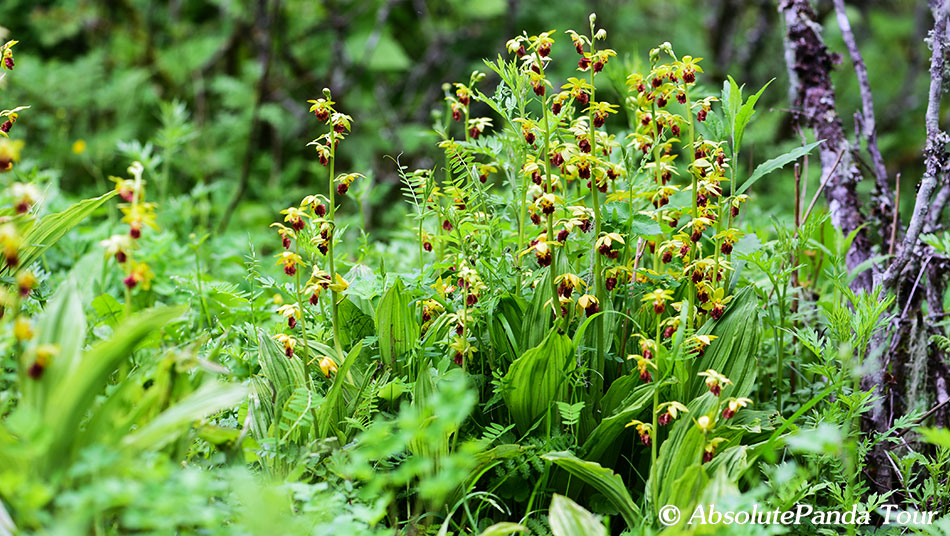
Calanthe tricarinata from Dengshenggou Valley.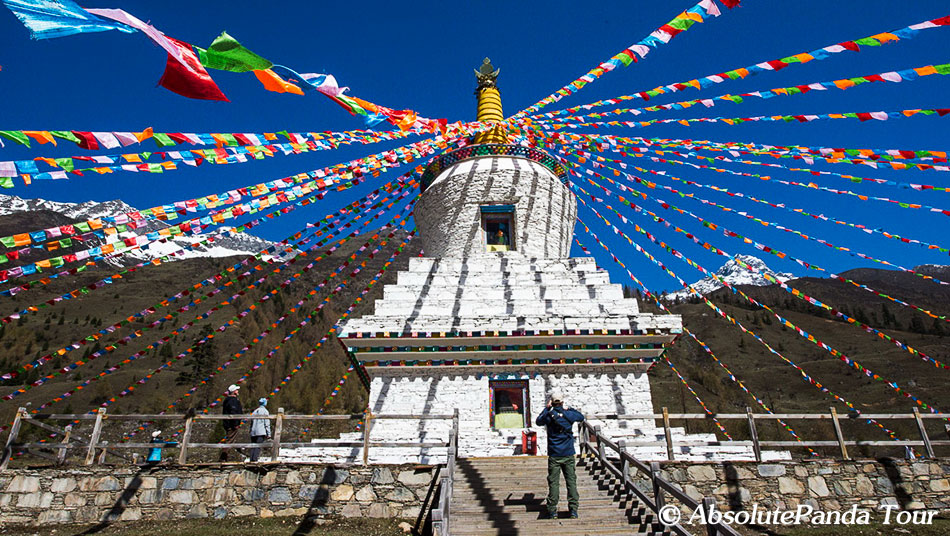
Prayer flags and white pagoda in Shuangqiao Valley.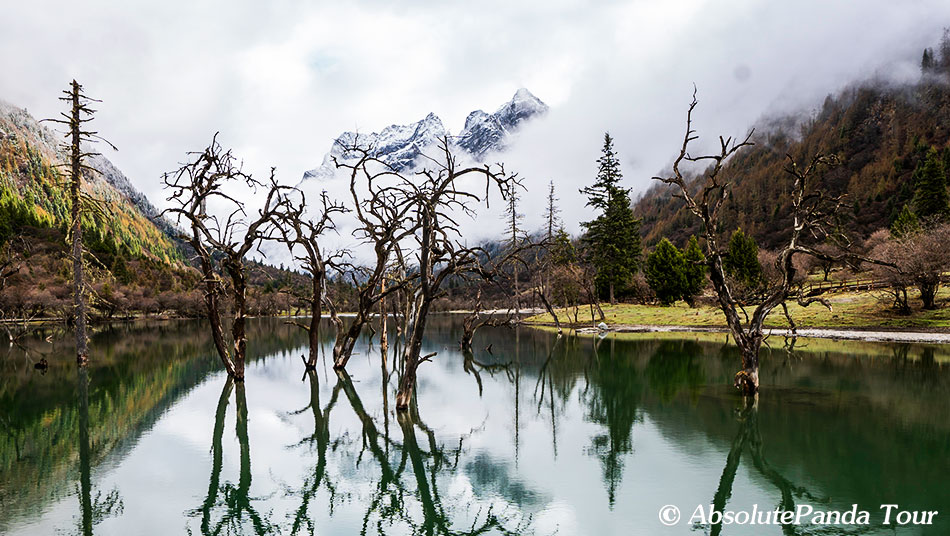
Beautiful lake in Shuangqiao Valley.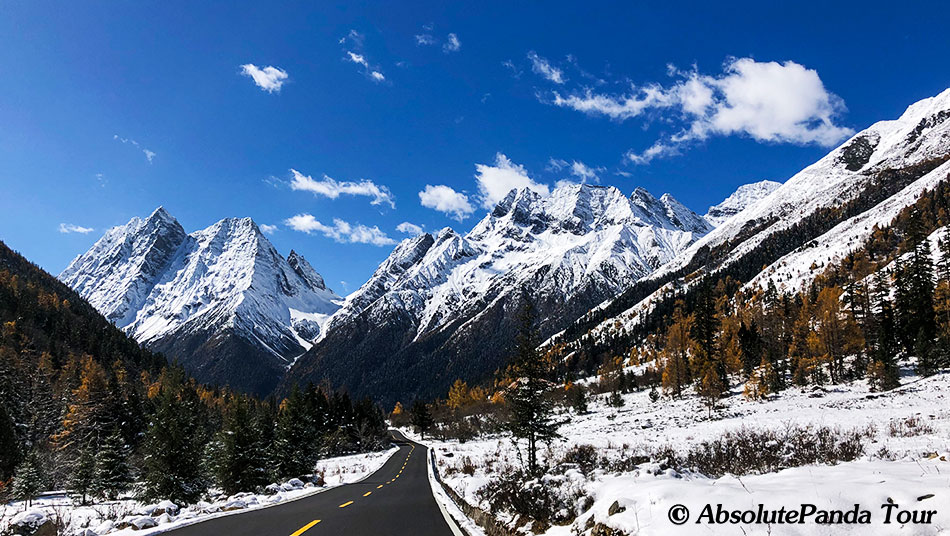
Snow mountains in late autumn.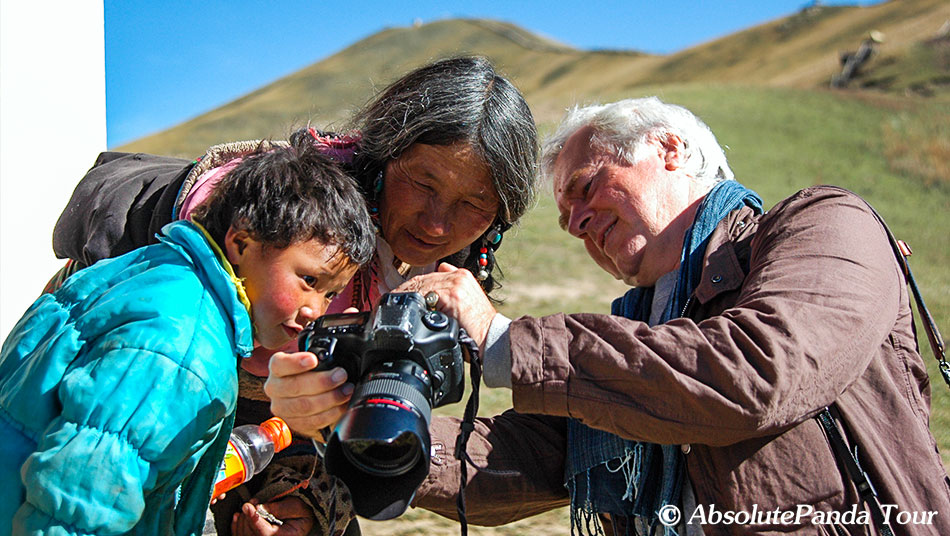
Share your photos with local people.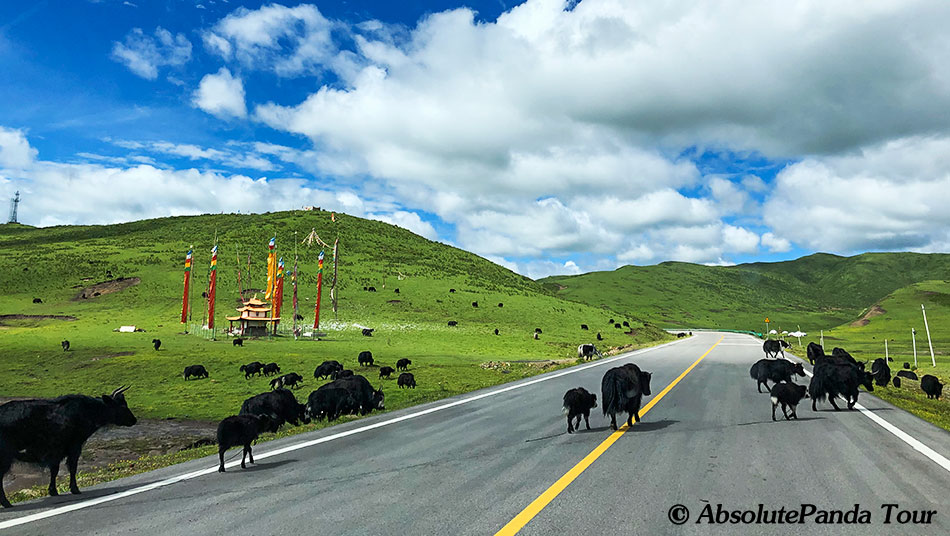
Yaks across the road in Ruoergai.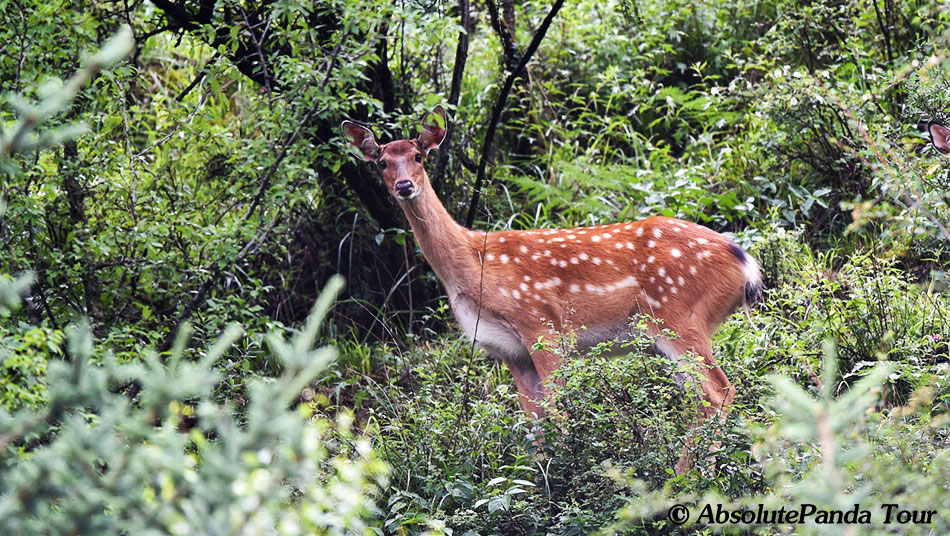
Sika Deer
Black-necked Crane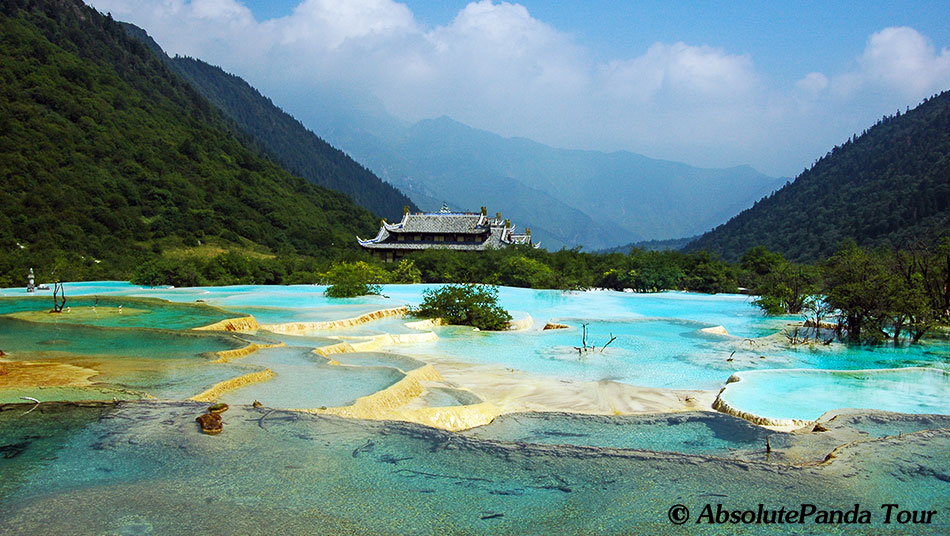
Huanglong National Park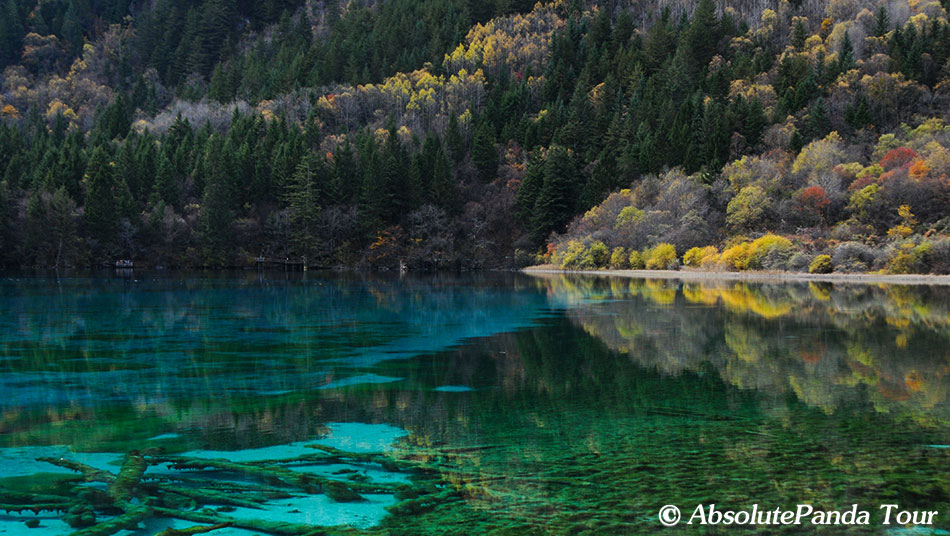
Jiuzhaigou National Park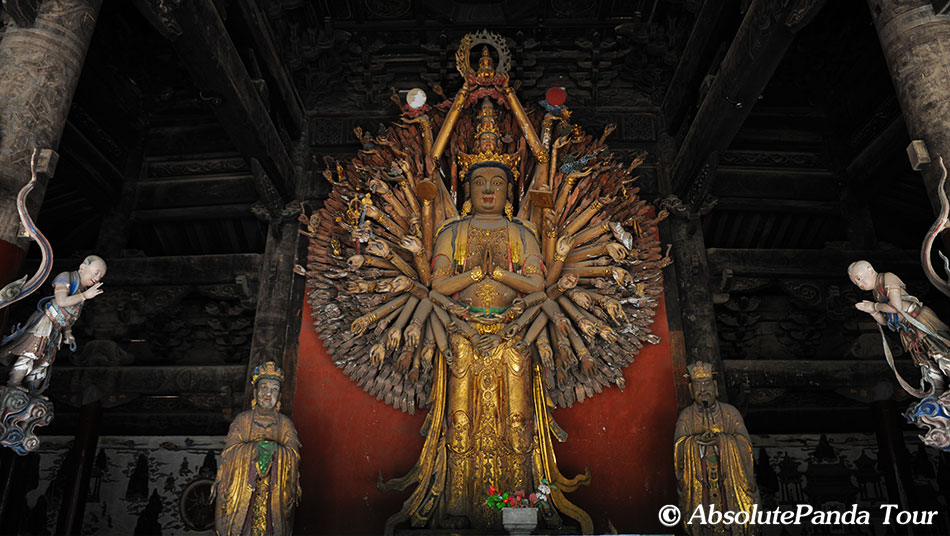
The highlight of Bao'en Temple.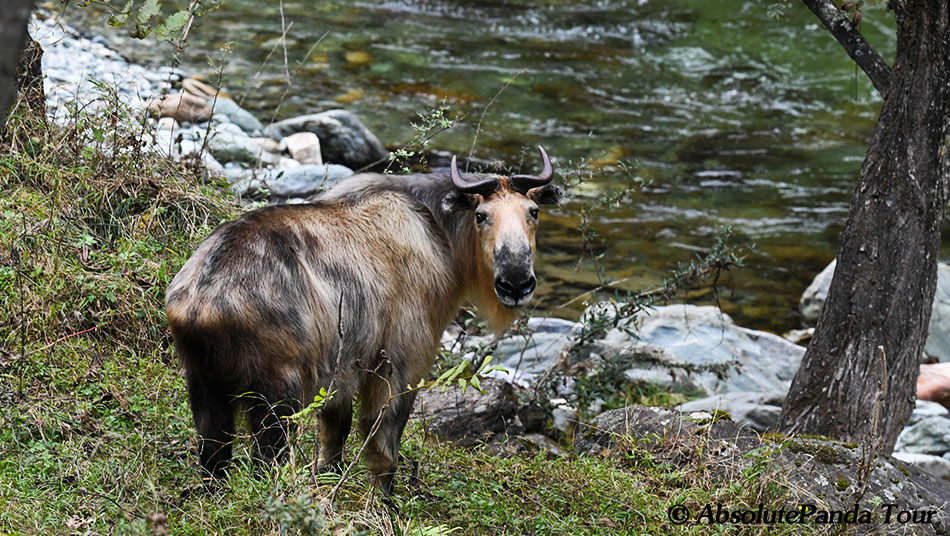
Sichuan Takin in Tangjiahe Nature Reserve.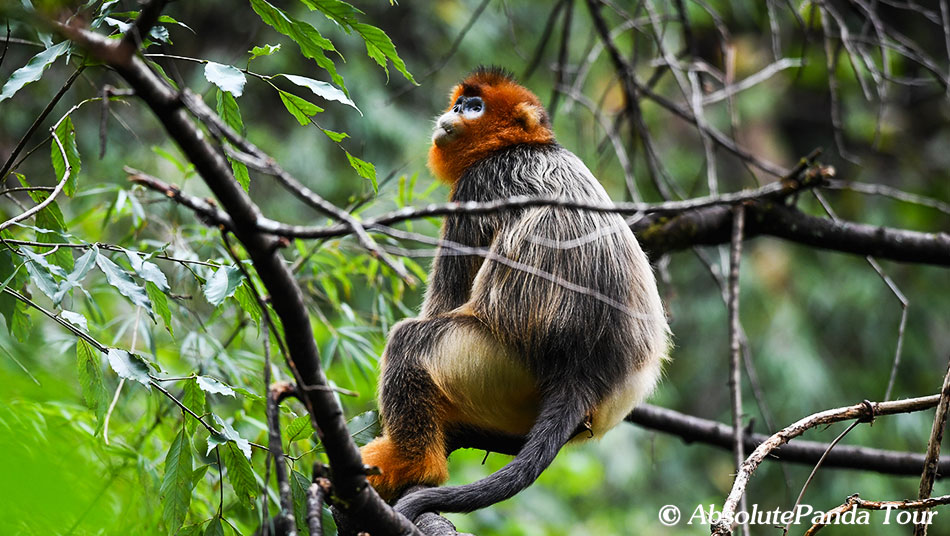
Golden Snub-nosed Monkey
Welcome to email us and share your trip photo with us. Photo Album of AbsolutePanda
 info@absolutepanda.com
info@absolutepanda.com